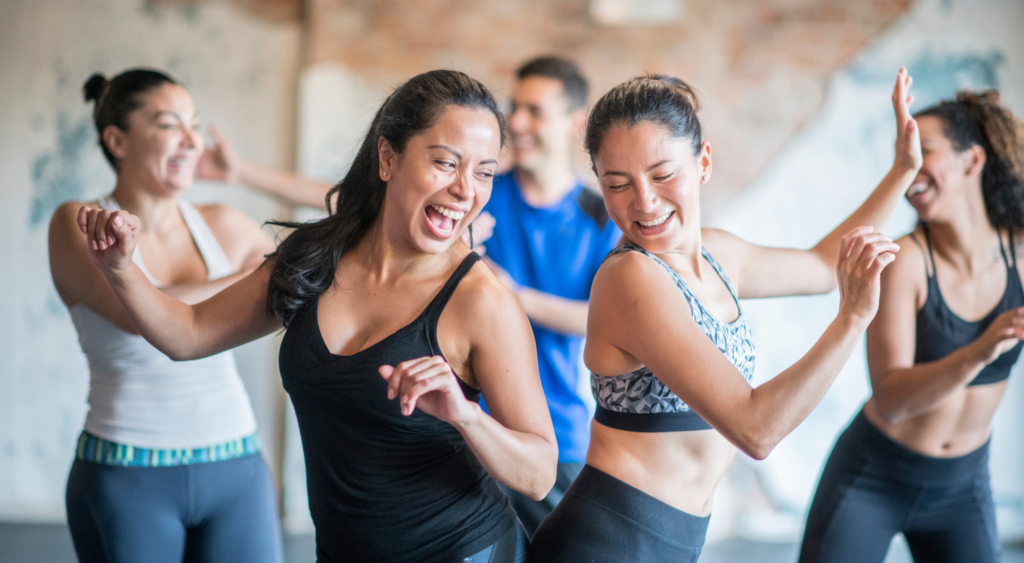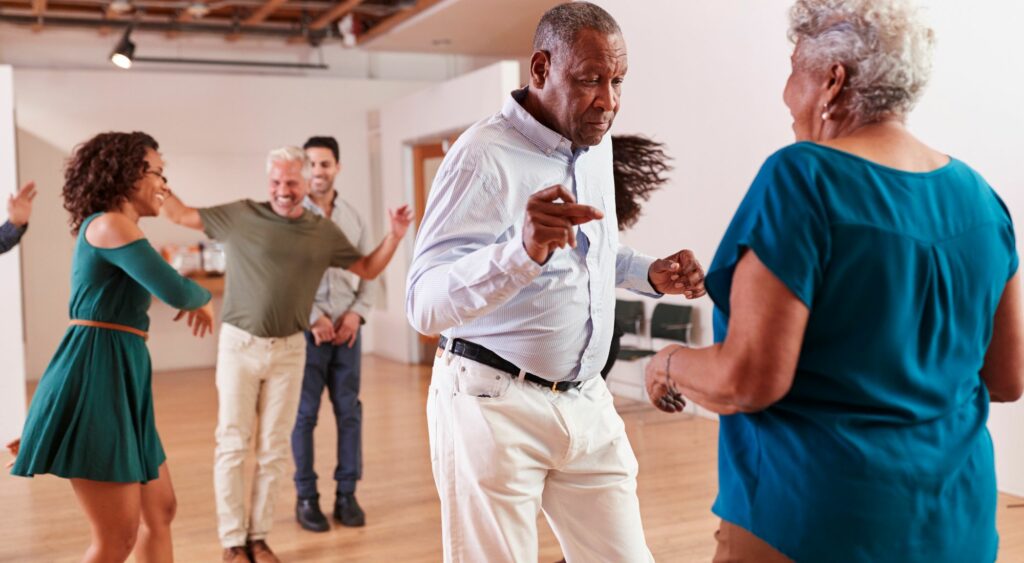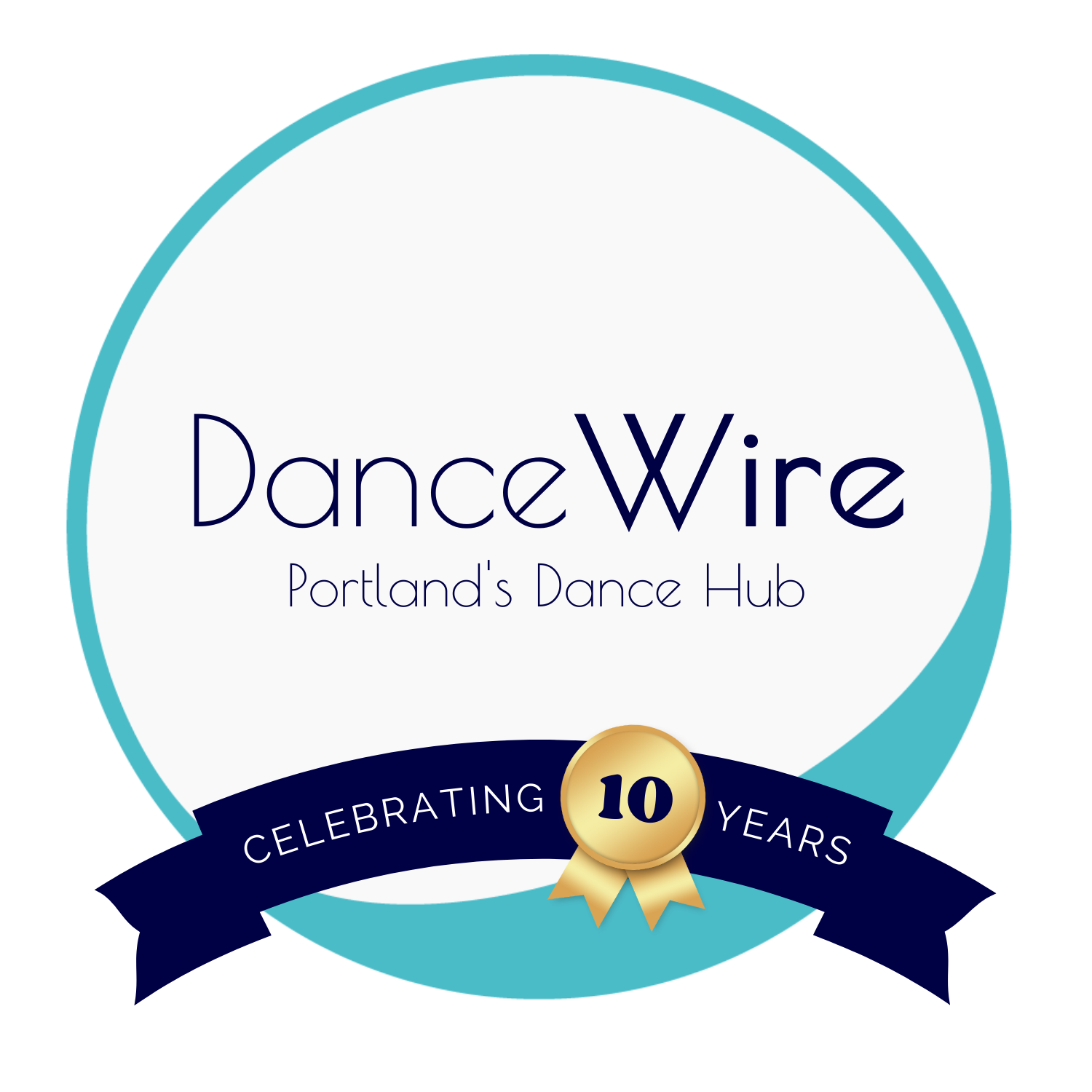There’s no doubt about it — dancing is fun and it makes you feel good.
But did you know that dancing has many benefits for health?
What are the health benefits of dancing? And does dance benefit one age group more than another?
We’ll break down the physical and mental health benefits of dancing from childhood through senior adulthood, and then we’ll let you know how you can plug into your dance community to start experiencing these advantages right away.
Table of Contents
- General Physical Benefits of Dance
- Beyond the Physical Benefits: 9 Mental and Physiological Benefits of Dancing at Any Age
- Health Benefits of Dancing for Children and Adolescents
- Health Benefits of Dancing for Adults
- Health Benefits of Dancing for Seniors
- Dance Wire: Providing a Community Where Dancers of All Ages Can Explore and Experience the Health Benefits of Dancing
General Physical Benefits of Dance
Anyone who has done even the most casual social dancing can tell you it gets your blood flowing!
Here are some of the biggest physical health benefits of dancing:
- Improved energy — A study done by the Scholarly Publishing and Academic Resources Coalition found that even a weekly danc class for adults could increase their energy levels.
- Boosted cardiovascular health — A good dance session will really get your heart pumping and make you sweat. The American Journal of Preventative Medicine found evidence that regular moderate-intensity dancing was enough to decrease the likelihood of developing or dying from heart disease by 46%.
- Greater flexibility — Since you have to stretch various parts of your body in many forms of dance, this leads to being much more flexible and having a greater range of movement overall.
- Better core strength — Dancing can strengthen your core, the muscles that control and stabilize your spine and pelvis.
- Exceptional balance — Besides practicing specific dances that require good balance, building your core and flexibility, as discussed above, also leads to superior balance (which is especially helpful for people moving into their older years).
- Improved bone health — Weight-bearing and high-impact activities, like some forms of dance, can help maintain and build bone mass.
- Weight loss — Since dance is aerobic exercise, it burns calories and can help people lose weight. Many who struggle with traditional workouts are drawn to dance because it’s so much fun.

Beyond the Physical Benefits: 9 Mental and Physiological Benefits of Dancing at Any Age
Just as a baby learning to crawl or walk is building new neural pathways, dancers who explore complex patterns that deviate from everyday movements can transcend their physiological well-being.
For people with a true passion for dance, the physical health benefits in dancing are just the tip of the iceberg. Let’s explore some other dancing health benefits throughout different stages of life.
Health Benefits of Dancing for Children and Adolescents
Build Self-Awareness, Coordination, and Control
Children, especially very young ones, have to be taught concepts like personal space and spatial awareness. Dance is a great way to do this.
If you’ve ever witnessed a dance class for children, you may hear the instructor telling them to watch for their neighbors as they move or to stay in a defined space. They must learn how to adjust their bodies to make room for others.
Studies have even shown that preschool-aged children who are allowed to access the creative parts of their brain through dance are better at learning spatial awareness and critical math concepts.
Create a Positive Self-Image
Research has concluded that participating in dance can give children and adolescents a stronger sense of self, including improved:
- Body-related perceptions
- Self-esteem
- Self-trust
- Self-expression; and
- Perception of dance abilities
Since there is growing concern in today’s world about kids having access to things that can give them a negative self-image, it’s wonderful to have a resource like dance to counteract that.
Develop a Sense of Dedication and Discipline
There is evidence that exposing children and adolescents to regular dance instruction builds the development of executive functions such as cognitive flexibility, working memory control, and inhibitory control. These concepts are crucial in building self-discipline.
In dance, repetition is key. From ballet to bellydance to breakdance, repetition of movement is the path everyone takes to get from beginner to advanced. The methodical, step by step approach is a great skill to have in dance and in life.

Health Benefits of Dancing for Adults
May Reduce the Risk of Mental Health Disorders
Dance isn’t just mood enhancing — it can actually change the way chemicals are transmitted in the brain to improve mental health.
UCLA Health did a study showing that free-moving (or unchoreographed) dance led to improved mental health among the majority of participants suffering from anxiety, depression, or a history of trauma.
The benefits included:
- Improved mood
- Better ability to let go of distressing thoughts
- More compassion
- Greater confidence
Can Provide a Psychological Reset
The act of dancing creates a space for adults to feel present in the moment, allowing you to think more clearly and be better in tune with yourself overall.
There can be a meditative quality in dancing that allows you to put everything else out of your mind and experience a psychological reset.
Build a Sense of Connection and Community
If you ask people who dance as a hobby why they feel so zealous about it, they’ll often tell you it’s because of the community. People come together to dance because they are passionate and like-minded.
For thousands of years, people have used dance to bond with one another in celebration, grief, prayer, and more.
Group dancing has been shown to release endorphins, which not only help us connect with those around us but are also known to relieve pain.

Health Benefits of Dancing for Seniors
Improve Cognitive Function
You’ve probably heard that activities like doing crossword or jigsaw puzzles promote mental agility and keep you sharp. But you may not have known physical activities like dance can act in the same way!
As we age, changes in the brain can lead to cognitive decline. But dance can actually physically combat this. One study showed that dance intervention improved the brain plasticity of older adults.
Other research proved that dance-based interventions could alleviate depression in those with dementia and mild cognitive impairment.
There is even an organization called Dance for Parkinson’s, which uses research-backed programs to help participants transform their lives and enhance their well-being through dance.
Promotes Regular Social Engagement
As people age, they may lose contact with friends and family members due to retirement, relocation, or death. This causes them to become more isolated if they don’t build new networks. Dance classes are a great way for seniors to get involved in the community!
At Dance Wire, we want to help you stay connected or find classes in your area. We strive to be a resource for the dance curious and professionals alike.
Ease Chronic Pain
Dance has been shown to ease chronic pain for seniors suffering from conditions such as:
- Fibromyalgia
- Arthritis
- Hip pain
- Knee pain
- The list goes on
Dance Wire: Providing a Community Where Dancers of All Ages Can Explore and Experience the Health Benefits of Dancing
Dance Wire wants to help all Portlanders experience the physical and mental health benefits in dancing.
Whether you’re “dance curious” and looking for like-minded groups of explorers or a professional dancer who wants to join the Portland scene, we have resources available to help you:
Contact us today to learn more about our mission and get plugged in.

